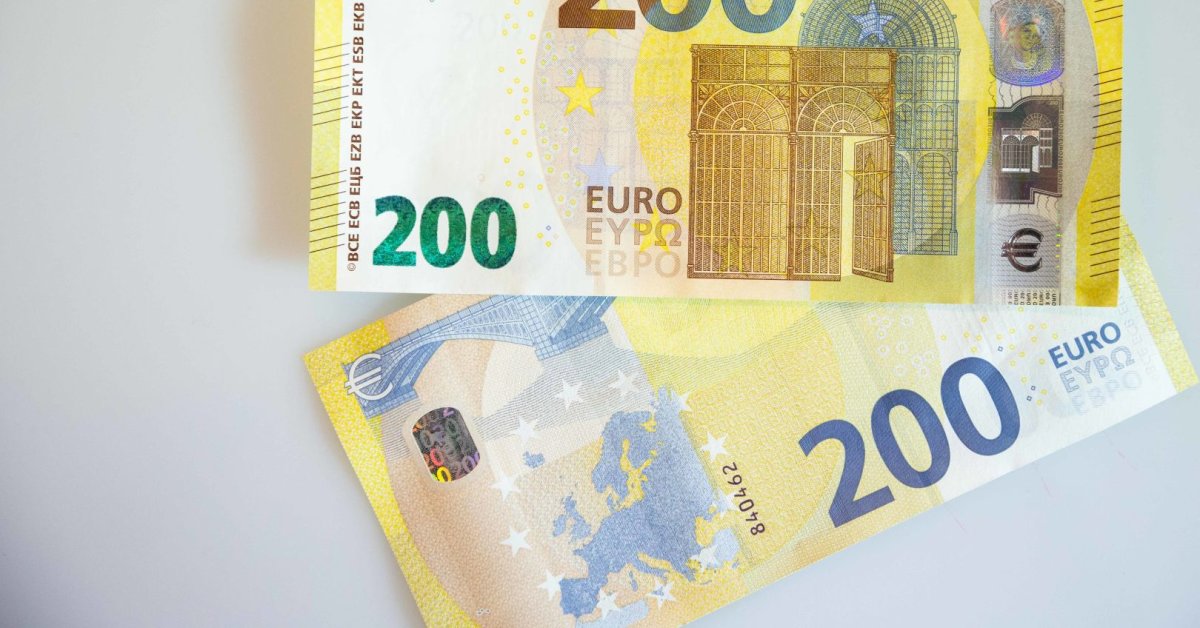Kristina Paulikė from Vilnius even had difficulties twice a week when she decided to pay with 200 euro bills in stores of different retail chains.
A Vilnius resident who came to the Iki retail chain store in Balsiai last week to go shopping was very surprised. The woman, who wanted to pay for the purchases, handed over a 200 euro banknote to the cashier, but heard that the employee would not accept the banknote – there were a lot of counterfeit 200 euro banknotes in circulation on the market.
“I told her to check the machine, because my money is being questioned, you have to check and prove that I am a potential criminal. The cashier refused to check, arguing that the machines did not recognize well-counterfeit 200-euro bills. I asked to call the police because I look like a potential culprit to her, I tried to call the administration, but the employee just assured me she had received an order from above and there was nothing she could do. “I was left with the money, but I didn’t want to continue the discussion, because there was a lot of queue behind me, so I paid with a card.” 15min said K.Paulikė.
Sigismund Gedvila / 15min photo / “Until”
–
The woman was surprised by this situation, and the cashier’s refusal to check the banknote with a special machine turned out to be especially strange – according to K. Paulikė, if the checking machines do not recognize counterfeit banknotes, they should be improved. Meanwhile, the buyer is now seen as a potential culprit in disposing of counterfeit money.
I told the cashier – check with the machine, because my money is being questioned, you have to check and prove that I am a potential criminal.
After returning home, K.Paulikė wrote a letter to the “Iki” retail chain, but has not yet received a reply. True, a woman with the same 200-euro banknote paid for the goods on Monday – in the same store, only at the self-service checkout.
And on Tuesday, a new adventure awaited the woman – this time in the Norfa store in Vilnius. After trying to pay with the 200 euro banknote at the self-service cash register, it was not possible to do so – the money was not accepted. However, the employee exchanged the large denomination banknote for smaller notes at the cash desk.
Another buyer faced a similar situation – only in another city and in another retail chain.
In 15min Ramunė, the reader who wrote the editorial office, said that the cashier did not accept a banknote of 200 euros from the Norfa store in Vilkaviškis. And in this case, the seller neither inspected nor checked the banknote in a special apartment.
“The cashier didn’t even take that banknote. It was new, received and really unprocessed. He saw it in my hands and said he did not accept the 200 euro banknote. When I rolled my eyes, he explained that for the second week in a row, all Norfos were not accepting € 200 and € 500 banknotes, a government order because there were allegedly many counterfeit banknotes. That’s how I answered, there were definitely no less surprised buyers around. I paid with a card, “Ramune was surprised.
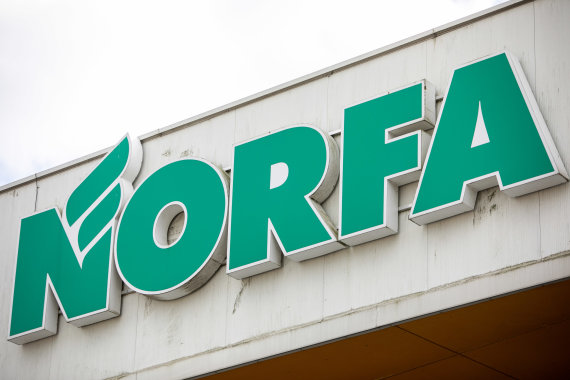
Sigismund Gedvila / 15min photo / Norfa shopping center
–
The buyer claimed that this information is not published anywhere in the store, so there will be a lot of surprised customers before the holidays, when people will pull their savings “out of socks” for gifts.
Merchants acknowledge that large banknotes are valued more closely
Representatives of retail chains say that they have received information from the Bank of Lithuania that counterfeit 200 euro and 500 euro banknotes have increased in the market. Representatives of the Bank of Lithuania also confirm that the traders have been warned, but emphasize that there was no order not to accept all banknotes of this denomination.
Merchants, for their part, argue that simply instructing employees to pay close attention to large bills and blaming “human error”. In other words, it suggests that employees either did not understand the instructions or wanted to be insured.
Merchants argue that simply instructing employees to pay close attention to large bills and blame “human error.”
Norfa spokesperson Darius Ryliškis 15min said that a couple of weeks ago, management had actually instructed cashiers to take a closer look at the € 200 banknotes, but there was no decision not to accept such banknotes. According to the representative of the retail chain, a closer look at the 200-euro banknotes was made after receiving a letter from the Bank of Lithuania regarding the increase in the amount of counterfeit money.
“There is no order not to accept banknotes, money is accepted as money. There has been an instruction to look more closely at the 200-euro banknotes, as there were counterfeit banknotes, and the cashiers’ attention was drawn to the need to call the police if a counterfeit 200-euro banknote was noticed, ”D. Ryliškis asserted.
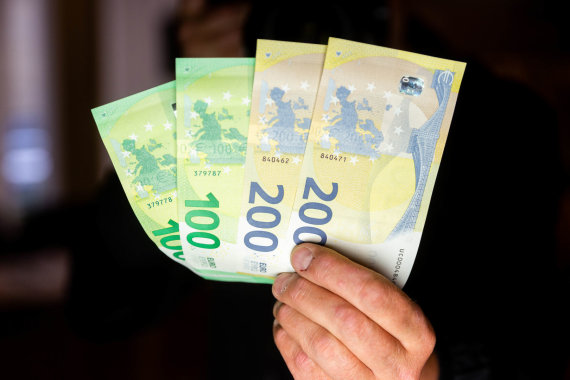
Sigismund Gedvilas / 15min photo / 100 and 200 euro banknotes
–
When asked what to do if the cashier does not call the police, but does not accept the banknote, D. Ryliškis advised: “Invite the director”.
Vaida Budrienė, the communication manager of the Iki retail chain, presented a similar position. According to her, the retail chain accepts most of the 200-euro banknotes – it is true that it does not actually accept certain series of banknotes, as the Bank of Lithuania has warned that they may be counterfeit. When cashiers see this series of banknotes, they inform the security.
“We cannot answer why the cashier did not check the banknote – we accept all banknotes, except for a certain series, due to which the Bank of Lithuania has certain suspicions. It was just the human factor that worked, maybe the salesperson was not very deep. Once again, we communicated to the staff that we accept all banknotes, ”explained V.Budrienė.

Photo from personal archive / Vaida Budrienė, Iki Communication Manager
–
She apologized to the buyer and hoped that there would be no more such misunderstandings in the retail chain.
Ernesta Dapkienė, Director of the Communication and Image Department of Maxima, the largest retail chain in Lithuania, has also confirmed that large receipts have recently received more attention from cashiers. It is true that banknotes with a face value of EUR 500 are more closely valued in this retail chain.
“According to the Bank of Lithuania’s statistics, the number of counterfeit 500-euro banknotes on the market has actually increased. We always take such data into account and strengthen our verification. ” 15min stated E.Dapkienė.

Photo by Maxima LT / Ernesta Dapkienė
–
However, she claimed that in Maxima stores, customers can pay with all banknotes.
“In our stores, shoppers can pay with all the banknotes, but paper banknotes, especially those of high denomination, are always receiving more attention from the cashiers in our stores. Upon receipt of such a banknote, it will be checked more than once with a special machine. In case of suspicion, please replace the banknote or pay with a card, “said a representative of the retail chain.
The number of counterfeit 500-euro banknotes received for the investigation has increased
Ramunė Juzėnienė, Head of the Expertise and Technical Division of the Cash Department of the Bank of Lithuania 15min confirmed that the central bank had warned traders about the € 200 and € 500 banknotes. However, he stressed that there is no recommendation not to accept all these denominations.
These banknotes are classified as high-grade counterfeits and have been known both in Lithuania and in other countries, and have been in circulation for many years.
According to R.Juzėnienė, the central bank has recently noticed a slight increase in the amount of counterfeit 500-euro banknotes received for research.
“We are talking about several dozen banknotes. These banknotes are classified as high-grade counterfeits and have been known both in Lithuania and in other countries, and have been in circulation for many years. The counterfeit banknotes mimic all the basic security features of the banknotes, such as the watermark, the security thread with microtext, the color-changing number (OVI), the hologram, the unevenness of the paper on the fingers and the magnetic properties of the banknotes, ”said the expert.
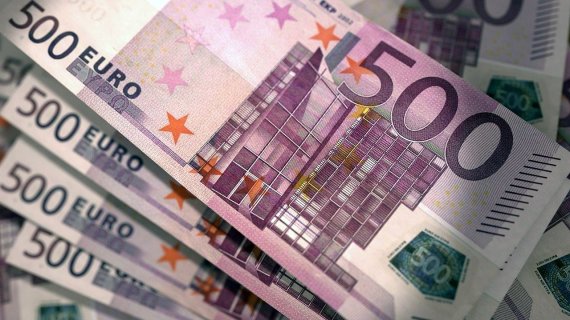
FNTT nuotr./Pinigai
–
Thus, in order to protect merchants from potential losses, the central bank warned them to check their banknote inspection equipment and encouraged them to upgrade it.
“After selecting the machines certified by the European Central Bank, with proper maintenance and constantly updating the software of the banknote checking machines, they recognize all counterfeit banknotes without any interference,” R. Juzėnienė assured.
Meanwhile, the situation for the € 200 banknotes is somewhat different. According to the expert, a very small number (individual cases) of genuine € 200 banknotes are affected by chemicals, which has led to a pre-trial investigation.
The edges of such banknotes are crumbled, the paper has become matte, thinner, no longer has the characteristic crispness of the banknotes, brown spots have appeared, the holograms of all banknotes have been rubbed off, only the color-changing number on the reverse (OVI) has lost its luster and does not change color.
‘When the banknotes are raised against the light, the security threads of some banknotes are seen to be broken, ie the metal layer that covers the security threads during production is broken. There are cases when shattered banknotes are repaired and their edges are glued. These banknotes have not only identical signs of damage, but also serial numbers “X039 …” starting in the same way, said an expert from the Bank of Lithuania.
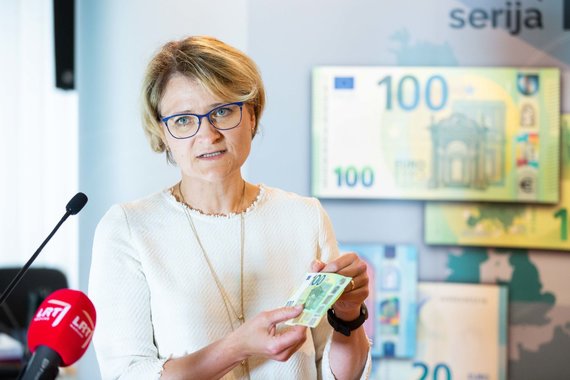
Photo by Sigismund Gedvila / 15min / Ramunė Juzėnienė
–
According to her, a pre-trial investigation is underway in Lithuania regarding these specifically damaged banknotes, and the Bank of Lithuania does not exchange or compensate for such banknotes and presents them as evidence to support the ongoing investigation.
“The Bank of Lithuania warned commercial banks and trading companies about the current situation, and recommended that they contact the police in all cases when attempting to pay for such 200-euro banknotes with the listed features and serial numbers” X039 … “.
The Bank of Lithuania has not recommended merchants were not allowed to accept all 200 euro banknotes, only warned about specifically damaged individual 200 euro banknotes, and only those whose serial numbers start with the numbers “X039 …”, the expert assured.
Meanwhile, she advised residents to avoid suspicious cash transactions and to pay attention to the quality of the 200-euro banknotes presented for payment and their serial numbers.
The Bank of Lithuania has not recommended trading companies not to accept all 200 euro banknotes, but has warned about specifically damaged individual 200 euro banknotes, and only those whose serial numbers begin with the numbers X039 …
According to R.Juzėnienė, if an employee of a trading company has a suspicion about the money presented for payment, he may refuse to accept such money and, if possible, apply to the police. Residents can always turn to the Bank of Lithuania for suspicious money and submit it for a solvency examination or certainty test. The money is investigated and a response is provided within 10 calendar days.
It is true that R. Juzėnienė emphasized that the amounts of counterfeit euros in circulation are decreasing both in Lithuania and in the euro area, and the 20 and 50 euro denominations remain the most common among counterfeits.
This was also confirmed by Ramūnas Matonis, Head of the Communication Division of the Police Department, 15min According to statistics, the number of investigations into counterfeit banknotes fell by 42% this year.
During 2021 400 such pre-trial investigations were opened in 10 months, compared to 690 in the same period last year.
– .
